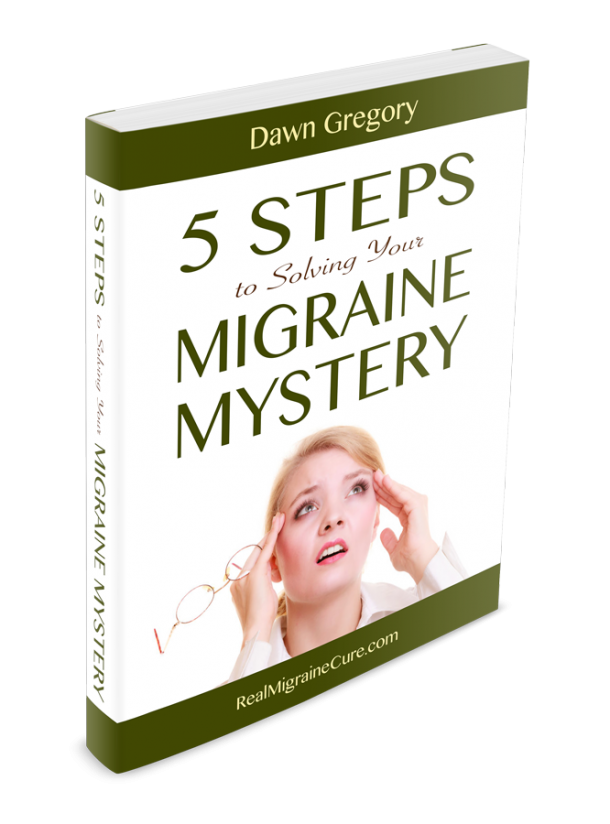Migraine triggers are activities that turn a normal day into a migraine day. We are taught that the best way to manage our migraines is to figure out what our triggers are, and avoid them. Unfortunately, even if you succeed in avoiding your triggers, there is no guarantee you will avoid a migraine.
It is commonly accepted that migraine triggers are not the root cause of migraines. That is why we call them “triggers” and not “causes”. Migraine triggers are things that might cause migraines in some people, some of the time, but not for all people all of the time. Triggers are the “proximal” cause of migraines, not the underlying cause.
Even so, we can’t overlook the fact that your migraine triggers hold important information to help understand what is causing your migraines. It turns out that all migraine triggers have one thing in common: they release toxins into your body.
Triggers Create Toxins
Everything that triggers a migraine creates some kind of toxic condition inside your body. In some cases this is obvious: When chemical cleaners, allergens, pollution, or food additives trigger a migraine, a toxin is clearly to blame. Migraines around a woman’s menstrual cycle may be an adverse reaction to the hormones produced during this time. Foods that trigger migraines often contain too much of a specific nutrient; for example, Brewer’s yeast is a high-potency supplement for B vitamins, but it will trigger migraines if you use more than you need.
Other toxic conditions occur when something the body needs to function is lacking: water, protein, vitamins and minerals, carbohydrates and fats. In other words, when you are dehydrated or malnourished, toxins are created inside your body through metabolic processes. This is one reason that the most common advice to migraineurs is to drink more water: water is needed for every chemical reaction that occurs inside your body. It is also the reason that various vitamins and minerals are so effective for treating migraines for some people.
Some migraine triggers create toxins through more complicated processes. For example, what does eye strain from excessive reading have to do with toxins? Why would a change in the weather create toxins? What kind of toxins are created by arguing with someone? If tropical fruits trigger migraines, does that mean they’re toxic? These questions have answers that lie in a deeper understanding of how the body functions. They involve chemical reactions that occur inside the body, and the byproducts of chemical reactions.
Your Answers Are in Your Triggers
Understanding that migraine triggers create toxins is a key to solving your migraine puzzle. Every migraine is different, and your unique set of triggers holds the clues for preventing and treating your migraines.
Look for commonalities in your triggers to identify what is toxic for you. Learn about the metabolic processes involved in your triggers and how the toxic byproducts can be eliminated.
As an example, my main set of triggers involve what I call micro-strain: repeated, minute, corrective movements. Micro-strain includes many of the things that have triggered migraines for me in the past:
- Excessive reading and computer use create micro-strain in my eye sockets, neck, and shoulders;
- Wearing high-heeled shoes causes micro-strain in my legs and feet;
- Sleeping on a bed that is too soft or using the wrong pillow builds micro-strain in my core muscles from trying to keep my body stable all night long;
- Sitting so I am looking at an angle instead of facing straight ahead puts further strain on my neck, back, and eyes;
- Living in a cold environment where I find myself shivering for hours on end creates micro-strain all over my body.
I found that the best way to manage micro-strain triggers is through physical movement: exercise. Stretching, yoga, dancing, and walking help mobilize the toxins that build up in my muscles. I learned how to do eye exercises that release the tension in my eye sockets and strengthen the eye muscles so they don’t strain as easily.
I also studied the metabolic process involved and what kinds of toxins are created from repeated movement. I learned about the body’s lymphatic system which is responsible for removing these toxins. I found out there are specific supplements that keep the lymphatic system functioning. Now I can prevent micro-strain effectively, and that has helped to cure my migraines.
Knowing what triggers your migraines will help you understand what toxins are causing them. Once you identify the toxins that effect you the most, you can treat your migraines by treating the toxic conditions instead of just treating the pain.


